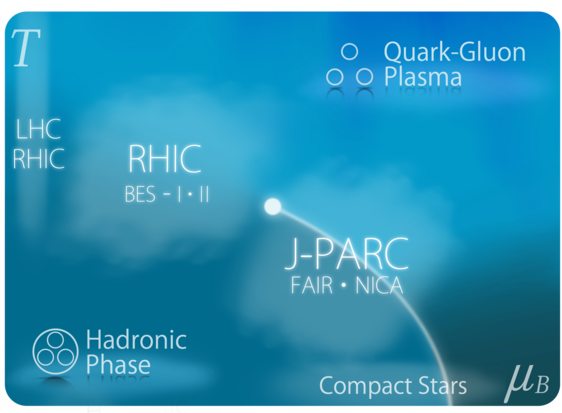Hadron Experiments Using HypTPC at J-PARC
Our group is conducting frontier hadron physics experiments at the J-PARC Hadron Experimental Facility to elucidate how matter is formed from quarks.
Quarks, the fundamental constituents of matter, cannot exist freely and are always confined inside hadrons, which are combinations of multiple quarks.
Ordinary hadrons are classified as baryons (e.g., protons, neutrons), composed of three quarks, and mesons, composed of a quark and an antiquark.
However, Quantum Chromodynamics (QCD), the fundamental theory of the strong interaction among quarks, predicts the existence of more complex structures known as exotic hadrons, such as tetraquarks (two quarks and two antiquarks) and pentaquarks (four quarks and one antiquark).
Recently, international experiments such as Belle (Japan) and LHCb (Europe) have discovered candidates for exotic hadrons, offering new insights into the nature of matter.
By systematically investigating the properties of exotic hadrons beyond ordinary baryons and mesons, we aim to understand the mechanism of hadronization—how quarks bind together to form hadrons.
The HypTPC group conducts cutting-edge experiments using the newly developed 3D tracking detector, HypTPC (Time Projection Chamber), at the J-PARC Hadron Facility to search for and study the nature of exotic hadrons.
J-PARC Experiments Using the 3D Tracking Detector HypTPC
We are conducting experiments at J-PARC using the 3D tracking detector HypTPC (Time Projection Chamber).
The following figure shows the structure of HypTPC and an overview of the experiment program.
We have proposed five experiments (E42, E45, E72, E90, E104) using HypTPC.
All of these are closely related to exotic hadron physics.
Details can be found in the proposals below:
E42: Search for H-dibaryon (Six-quark state?)
E45: Hadron spectroscopy (Hybrid baryon candidates?)
E72: Λ* spectroscopy (Possible exotic hadron)
E90: ΣN cusp spectroscopy (Strange dibaryon like deuteron?)
E104: Double φ production (related to glueballs?)
LOI (to be submitted): Θ⁺ search (uudds̅ pentaquark?)
More J-PARC proposals can be found here → J-PARC Proposals

